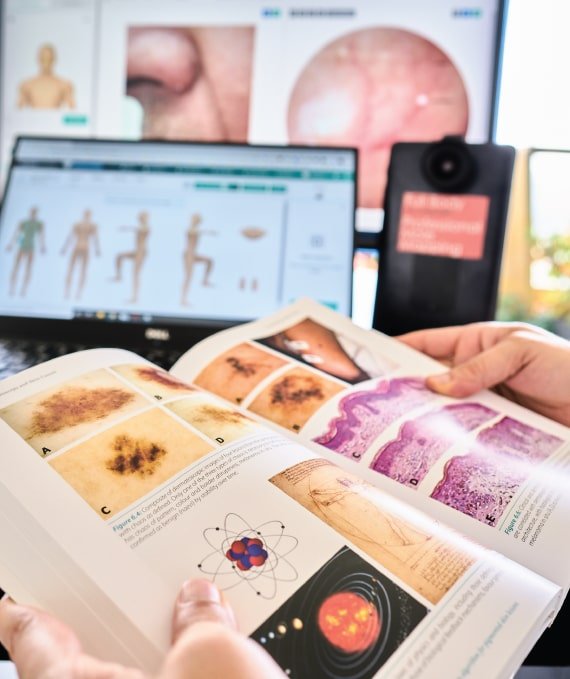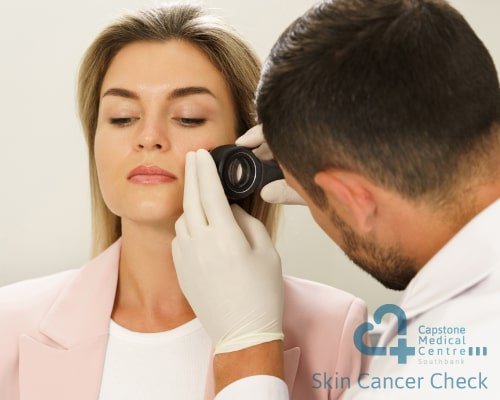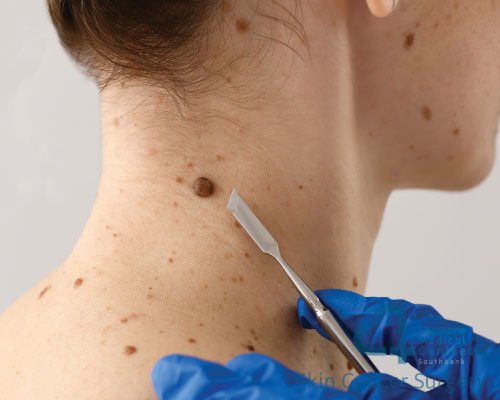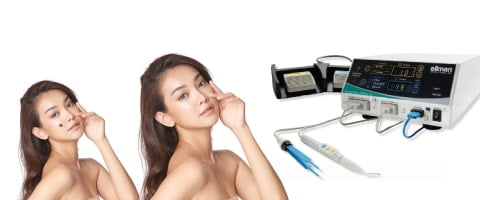Skin Cancer , Mole Mapping And Cosmetic Mole Removal
- CERTIFIED SKIN CANCER DOCTOR
Promotes a More Even Skin Tone
Reduce the Signs of Aging
Protect the Skin from Sunburn
Reduce the Risk of Skin Cancer
Promotes a More Even Skin Tone
Reduce the Signs of Aging
Protect the Skin from Sunburn
Reduce the Risk of Skin Cancer

Mole mapping involves taking photos of your entire body and then combining these photos into a complete image of your body to record the location and size of your moles. This baseline image is then compared to your whole body photograph during your follow-up visit.
Capstone Medical Practice’s new state of the art technology makes skin checks faster and more accurate. Whole body mapping is where photographs are taken of your entire body creating a map of your moles to monitor any changes in skin over time. Mole mapping is one of the most accurate methods in helping to diagnose melanomas and other skin cancers early. It provides a baseline for further checks so any slight change in the skin can be detected.
A skin cancer body check gives patients the reassurance of having a thorough head-to-toe skin check by a certified skin cancer specialist GP. However, it doesn’t include total body photography or monitor your skin over time.
A whole-body Mole Map is usually recommended for anybody who has moderate to high risk factors. At Capstone Medical we provide total body photography and monitor your skin and moles over time for changes. Mole mapping is the most comprehensive service. It is also for anybody who wants a baseline to monitor their skin over time for changes. It is a way for patients to manage their melanoma risk by tracking changes of their skin and moles. A whole-body Mole Map is essential if you:
– Have a personal or family history of melanoma
– Have a high number of moles
– Want a baseline of your skin and moles created for future comparison
– Want to manage your skin cancer risk

Sun exposure is the cause of approximately 99% of non-melanoma skin cancers and 95% of melanomas in Australia. Regular skin checks by a specialist skin cancer screening doctor is recommended to help catch any potential problems as early as possible.

After skin cancer surgery, the wound may be closed with absorbable sutures and covered with a waterproof dressing. You will be asked to visit your doctor again after a few days to change the dressing.
Due to all surgical procedures are performed with sterile equipment, the possibility of infection will be very low. In any case, if you notice discharge from the wound or severe pain after surgery, these symptoms may be due to infection, so it is better to see your doctor again as soon as possible.

Helps remove black spots and makes the skin brighter naturally.
The overgrowth of skin can cause moles. You may have more than one on your face and body. Most moles are benign, there is no need to be worried unless it bothers you and is cancerous.
Cancerous moles can lead to serious health risks if not removed. For suspicious moles other techniques such as a punch biopsy mole removal, shave biopsy or traditional excisional biopsy may be required. Our experienced skin cancer doctors help our patients achieve their ideal image through mole removal and identifying and performing biopsies on suspicious moles to preserve your health and peace of mind.
Mole removal is different to mole biopsy. It is designed to remove moles from the skin to minimise scarring and creates a smooth and discreet finish.
There are a variety of techniques that our experienced doctors use at Capstone Medical Centre to effectively remove moles from any location. This process is virtually painless with the help of local anesthetic, and your recovery requires zero downtime.
Benign non-suspicious moles, skin tags, seborrheic keratoses, warts, verruccas, and other raised lesions can be cosmetically removed by using our Surgitron machine, which is radio wave therapy. This treatment normally results in minimal to no scarring and is a great option for visible cosmetic skin tags, moles or lesion on the face and body.
This machine has different size probes to precisely remove the targeted area and avoid any thermal damage to the surrounding tissue
Surgitron is an Advanced technology radiosurgery device ( Dual Frequency combines two optimised frequencies) that uses ultra-high-frequency radio wave technology to precisely cut skin tissues, which allows for the removal and surgery of masses and cosmetic lesions on the face and body with minimal risk of scarring.
The technology and machines we use is to photograph, analyse and look for changes in your skin in a period of time. Taking photographs and examining them allows us to detect early skin cancers that might have been missed thereby reducing the struggles of unnecessary biopsy procedures.
Skin cancer identifications include:

Cryotherapy, also known as cold therapy is the general use of low temperature to treat a variety of tissue lesions. Doctors use it to treat many skin conditions (including warts and skin tags).
Monday – Wednesday
Thursday – Friday
Saturday
Sunday
Public holidays
9 am to 5:30 pm
8:30 am to 6:30 pm
10.00 am to 3.00 pm
closed
closed
© 2020 All rights reserved.
